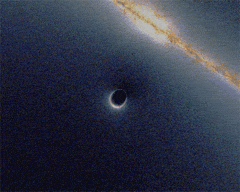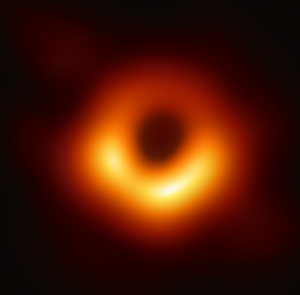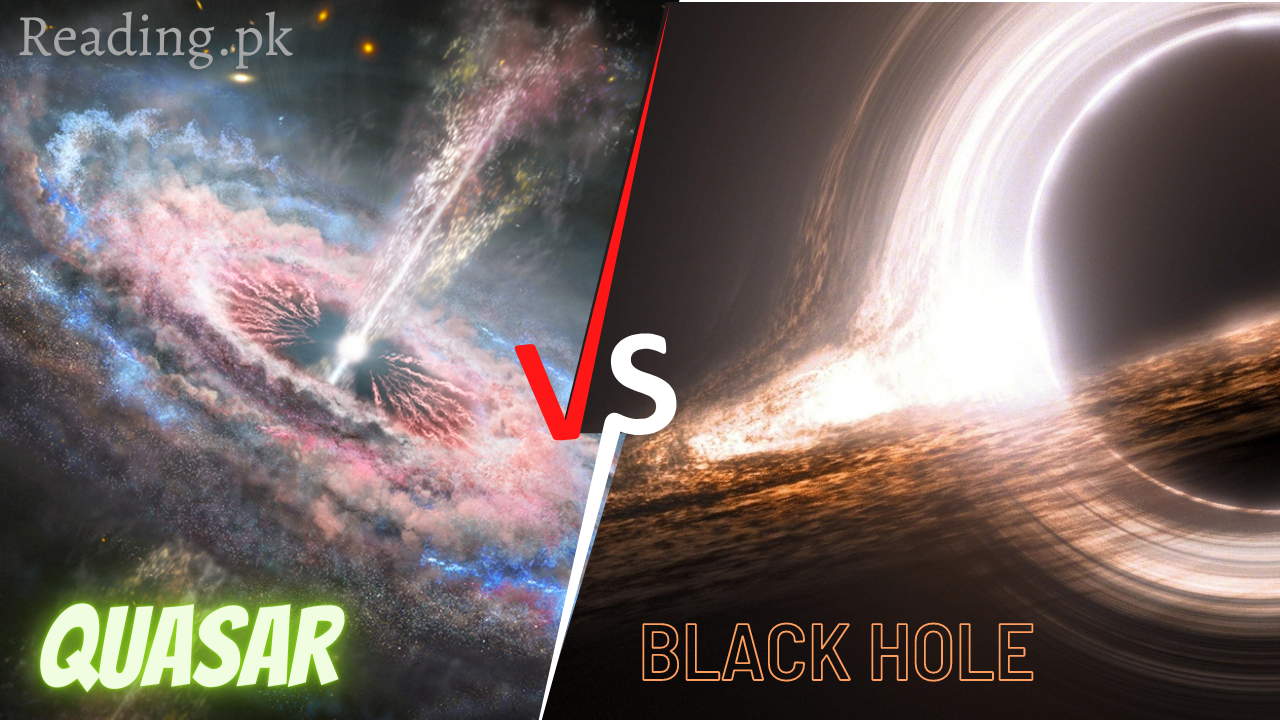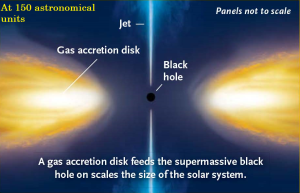Thousands of mysteries are arising as we explore science day by day. The discussion about various space objects creates suspense and curiosity in our minds. Exploring the discoveries about Cosmos is incredible and confusing in some aspects. Some people get confused while studying Quasars and Black Holes by some characteristics. Here we are to discuss Quasars Vs Black Hole in detail with their characteristics, differences, formation, shape, and connection. This article will also answer frequently asked questions (FAQs) about Quasars and Black Holes. Quasars and Black Holes are different in some characteristics, but they have a specific connection too. As you know, Quasars are the brightest objects in the Universe, while Black Holes are the darkest objects ever discovered. This article will help you explore in detailed information about Quasar and Black Hole and their mutual connection. In 1939 Albert Einstein published an article in the Annals of Mathematics in which he claimed that black holes do not exist in nature. After a quarter century, Maarten Schmidt discovered quasars as potent light sources with cosmological distances. These mysterious sources of light are described during the 1960s midway through Yakov Zel’dovich in the East and Ed Salpeter in the West as a supermassive black holes supplied with gas from the host galaxies.
[lwptoc]
When gas flows toward the black hole whirls like water flowing into the gutter; when the gas reaches only a fraction of light in the Innermost Stable Circular Orbit (ISCO) around the black hole, it gets heated by rubbing against itself due to turbulent viscosity. Therefore, its accretion disk shines bright, emits around one-tenth of its remaining mass, and eclipses the luminosity of stars within its host galaxy by orders of magnitudes. Quasars with high feeding rates are visible right up towards the outer edge of the observable Universe. A few decades later, scientists discovered that nearly every galaxy is home to a supermassive black hole in its center that is starved for the majority often. Still, it bursts intermittently for only thousands of millions of years in each burst. The quasars look like a baby, which are known to take food from the table once they are fed because of being too active.
What is a Quasar?
A quasar also referred to as a quasi-stellar object, is a very luminescent Actively Galactic Nucleus (AGN) powered by a Supermassive black hole with masses ranging from millions to billions of solar mass enclosed by a gaseous accretion disc. The gas escaping from the disc into the dark hole is heated due to friction and releases energy through electromagnetic radiation. Quasars’ radiant energy is immense, and the most powerful quasars are hundreds of times brighter than an object like the Milky Way. Generally, quasars are classified as a subclass within the broad category known as AGN. Quasars’ redshifts are of cosmic origin. We have found around 750,000 unique quasars that span different age groups, with the most distance from us approximately 13 billion light-years away. While it isn’t an absolute fact, many scientists believe these bright objects form by the light escaping from the edge of a Supermassive black hole just before hitting the horizon of its events. Light is attracted in while other particles are released at a rapid speed, and that’s how a quasar’s intense and unpredictable light develops. “Quasar” is a short form to mean “quasi-stellar radio source” this is how these objects were first discovered. Around 60 years ago, astronomers spotted bizarre, star-like objects in radio and visible light surveys. We now know these objects are very far away, but they are also powered by accretion into the Supermassive Black Hole.
What is Black Hole?
Black holes are an area of spacetime that is strong enough that particles, or even electromagnetic radiation, such as light, cannot escape from it. The general relativity theory predicts that a mass with enough compactness could deform spacetime and form the shape of a black hole. The edge line of a black hole with no escape is known as “the event horizon”. While it significantly impacts the outcome and conditions of any object that crosses it, it does not have specific features that can be detected locally in the general relativity model. In many ways, the black hole behaves as a perfect black body because it doesn’t reflect any light. Quantum field theory for the curved spacetime model suggests that event horizons release Hawking radiation, having a similar spectrum to a black body with a temperature proportional to its mass. This temperature is on the billionths of a Kelvin for stellar black holes, making it quite impossible to see directly.


A black hole forms when a massive star that is 3-4 solar masses big is weakened beneath its Schwarzschild radius, leading to an explosion of a supernova. The star’s density creates a massive gravitational swarm and draws everything in its vicinity. The edge of the black hole is referred to as an event horizon, and when something is located at this point, there is no way out. The gravity pull of a black hole is so massive that light gets absorbed within. They can also be classified into various types: Supermassive black holes, intermediate-mass black holes, and stellar black holes.
Quasar Vs Black Hole | Connection, Comparison and Difference

Quasars Vs Black Hole | The Major Differences
In terms of what the distinctions between quasars versus a black hole the differences consist of the following:
|
Quasar |
Black Hole |
| Quasars are the brightest objects in the universe. | Black holes can be described as the darkest thing in the universe. Even the light cannot escape from Black Hole. |
| Quasars can only last approximately 10 million years. | Black holes can theoretically be around for years until they disintegrate. To put it simply there is no way that a black hole will ever die any time in the near future.
|
| Quasars can reach temperatures of 100 billion degrees Celsius. | A black hole can reach near absolute zero temperature as anything could be. |
| A quasar can be formed when a Supermassive black hole contains massive amounts of matter (either when a new galaxy is in formation or when two galaxies collide) surrounding it to create an extremely powerful and bright disc of accretion. | A typical black hole forms when an enormous star dies during a supernova explosion. |
| Quasars are usually the largest in the solar system that is approximately four times the size of the Sun (around 4 billion kilometers). | The biggest Supermassive black holes are believed to be approximately 126 billion km. Smaller ones tend to be 60 – 600 km based on the notion that a black hole that has the size of the Sun is only 6 km in length. |
| Scientists have discovered zero time dilation that results from the quasars. | Black holes are magnetized by magnetic fields and gravity that are so powerful that they could dilate the time around them. However, standing near the very edge of a black hole for one minute would result in 700 years of time passing on Earth. |
Connection between Quasar and Black Hole
There’s a black hole that lies behind every quasar. However, not all black holes are classified as quasars, in the sense that the quasar is just one aspect of a black hole that it could show. Viewing a quasar, you’re viewing the black hole. Before the invention of the Hubble Space Telescope, quasars were thought to be star-like objects that were isolated with a mysterious origin. Hubble has observed various quarks and discovered that they are all located at galactic centers. Nowadays, most scientists believe that massive black holes located at the center of galactic space are the “engines” that drive the Quasars. Before the advent of Hubble, several candidates for black holes were investigated. However, the limitations of ground-based Astronomy meant that conclusive evidence of their existence was not found. The black holes, in their nature, cannot be observed since there is no way to escape light from them. However, astronomers can study how black holes affect their surroundings. They can observe powerful plasmas of electrons that travel vast distances, some thousand light years away from the center of galaxies.
Center of Galaxies | Quasars or Black Hole?
Astronomers are now convinced that quasars are among the most luminescent centers of galaxies at their earliest stages of development. After years of intensive research, we now have a different definition for the objects we study: a Quasar is a kind of active galactic nucleus or AGN. There are a variety of kinds of AGNs, each with its unique story to be told. Theoretically speaking, the powerful radiation produced by an AGN is the reason for the Supermassive black hole that is located at its core. The materials emit the radiation in the accretion disk surrounding the black hole as millions of degrees superheat it through the intense friction caused by particles of dust gas, atoms, and other particles in the disk interacting countless times against each other. The spiraling inwards of matter within the Supermassive black hole’s acceleration disc is at the heart of a quasar caused by particles colliding with each other and then losing momentum.

The material was derived from vast clouds of gas predominantly composed of molecular hydrogen that covered the universe during the time immediately following the Big Bang. So, being positioned as they did at the beginning of the universe, quasars had access to a large amount of matter available to feed upon. When the matter inside a black hole’s accretion disk gets heated and emits radio waves, X rays, and visible and ultraviolet light. The quasar gets so bright that it can outshine galaxies in all directions. However, keep in mind that quasars are incredibly distant. They are so far away from us that they only look at the active nucleus or the core of the galaxy they live. We can’t see anything other than its bright central area. It’s similar to seeing the headlight of a car in the distance in the dark: you have no idea what kind of car you see since everything else is dark.
Formation of Quasars
A quasar isn’t just the black hole that feeds it but the structures that produce light surrounding it. The formation of Quasars starts when the visible and ultraviolet light comes through the glowing disc formed by the falling material, and even more, hot gas in the upper part of the disk emits the X-ray energy. Jets that shoot out from the poles of the black hole emit radio waves to the X-rays. A little further away from the black holes, the apex of gas and dust emit light at the infrared wavelength. The dimension of a quasar’s disc of accretion, which scales to the mass of the black hole, is usually only a few light days across. It is tiny compared to the galaxy that hosts it, and the Milky Way, for comparison, is approximately 100,000 light-years across. However, quasars can often surpass their hosts. Although dazzling, Quasars are so small and far that even the strongest telescopes cannot see all the intricate structures inside a quasar. Astronomers need to find the details by using other methods that include studying the spectrum (spreading out light using the wavelength) and light curves (spreading out light based on the time of its arrival). Although the specifics are discussed, we can use the latest knowledge to draw an overall picture of a Quasar. Be aware that this image could change as we discover more!



How does a Black Hole Become Quasar?
To be a quasar, the black hole has to meet certain conditions. It must be Supermassive, which is thousands or billions of times larger than the size of our Sun. Black holes like this are located in the central regions of the majority of massive galaxies. However, even so, not every galaxy has a Quasar. A quasar, in particular, is a Supermassive black hole continuously feeding materials. A matter falling has swung into a heated disk that is shining so brightly that it is reflected off the galaxy surrounding its black hole.
